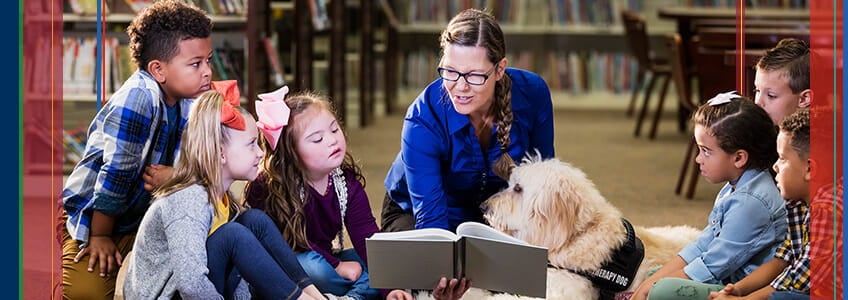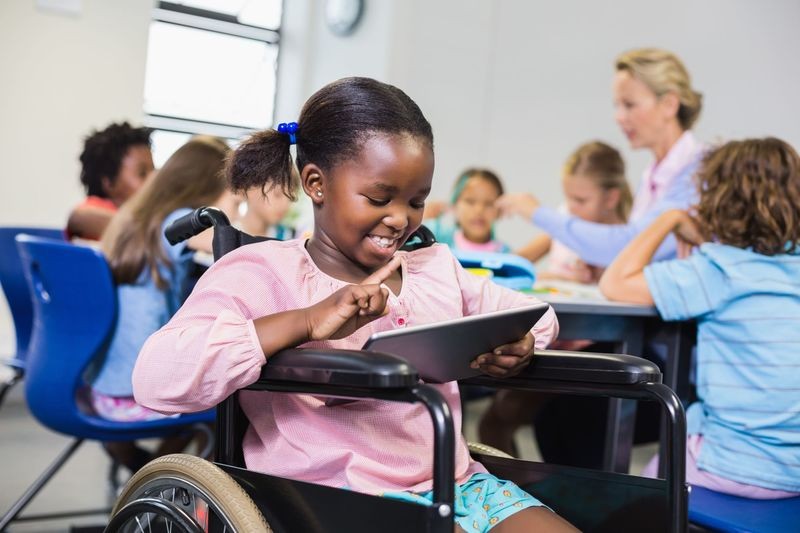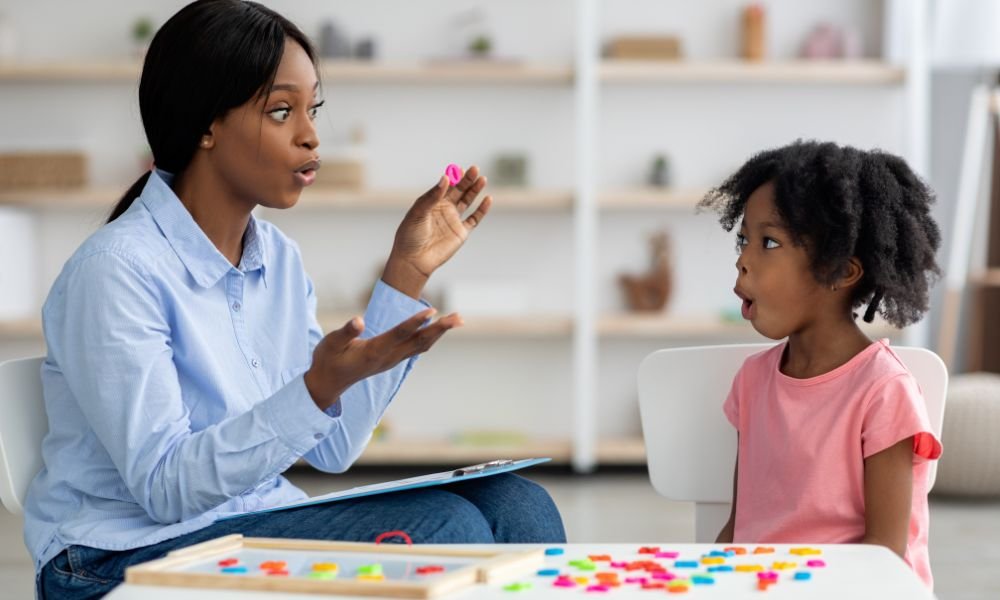Creating Inclusive Educational Environments: Caring for Students with Disabilities in Schools
Introduction
Inclusive education is the cornerstone of a society that values diversity and equality. It ensures that every student, regardless of their abilities or disabilities, has the opportunity to learn and thrive within the educational system. However, providing adequate care and support for students with disabilities requires a comprehensive approach that goes beyond mere accommodation. In this essay, we will explore various strategies and best practices for taking care of disabled students in schools, focusing on creating an inclusive and supportive environment that fosters their holistic development.
Understanding Disability
Before delving into strategies for caring for disabled students, it is essential to have a nuanced understanding of disability itself. Disability is not merely a medical condition; it is a complex interplay between an individual’s impairments and the social and environmental barriers they encounter. Recognizing this social model of disability is crucial for shaping inclusive practices in schools. Disability encompasses a wide range of conditions, including physical, sensory, cognitive, and emotional disabilities, each requiring unique approaches to support and care.
Creating a Supportive School Culture
At the heart of caring for disabled students lies the creation of a supportive school culture that values diversity and promotes inclusion. This involves fostering empathy, understanding, and acceptance among students, teachers, and staff members. Educating the school community about disability rights, advocacy, and inclusive practices is essential for building a culture of inclusivity. Moreover, celebrating diversity through events, workshops, and inclusive curricular activities helps create a sense of belonging for all students.
Developing Individualized Education Plans (IEPs)
Individualized Education Plans (IEPs) are crucial tools for catering to the specific needs of disabled students. These personalized plans outline the student’s strengths, weaknesses, goals, and necessary accommodations or modifications to the curriculum. Collaborating with parents, special education teachers, therapists, and other relevant professionals, schools can develop comprehensive IEPs that address the academic, social, emotional, and physical needs of disabled students. Regular review and assessment of IEPs ensure that they remain relevant and effective in supporting the student’s growth and development.
Implementing Universal Design for Learning (UDL)
Universal Design for Learning (UDL) is an educational framework that aims to provide all students, regardless of their abilities, with multiple means of representation, expression, and engagement. By incorporating UDL principles into teaching practices, educators can create flexible learning environments that accommodate diverse learning styles and preferences. This may involve using multimedia resources, providing alternative means of assessment, and offering varied instructional strategies to cater to the needs of disabled students. UDL promotes access, participation, and success for all learners, fostering an inclusive educational experience.
Ensuring Physical Accessibility
Physical accessibility is a fundamental aspect of caring for disabled students in schools. Ensuring that school buildings, classrooms, playgrounds, and facilities are wheelchair accessible and equipped with assistive devices promotes independence and inclusion. Moreover, providing accessible transportation options and designated parking spaces for students with mobility impairments facilitates their participation in school activities. Schools should conduct regular accessibility audits and make necessary modifications or accommodations to remove barriers to access for disabled students.
Supporting Social and Emotional Wellbeing
Students goes beyond academic support; it also involves nurturing their social and emotional wellbeing. Students with disabilities may face stigma, bullying, or social isolation, which can impact their self-esteem and mental health. Creating a supportive peer environment through peer mentoring programs, buddy systems, and inclusive extracurricular activities fosters positive social interactions and friendships. Additionally, providing access to counseling services, support groups, and emotional regulation strategies helps disabled students develop resilience and coping skills.
Promoting Assistive Technology Integration
Assistive technology plays a crucial role in supporting the learning and independence of disabled students. From screen readers and speech-to-text software for students with visual impairments to communication devices and adaptive keyboards for students with speech or motor impairments, assistive technology enhances access to education and facilitates active participation in classroom activities. Schools should invest in training teachers and students on the effective use of assistive technology tools and ensure their availability and maintenance.
Fostering Collaboration and Professional Development
Effective care for disabled students requires collaboration among educators, specialists, support staff, and families. Creating multidisciplinary teams that work together to address the diverse needs of disabled students promotes holistic support and continuity of care. Regular meetings, workshops, and professional development sessions provide opportunities for educators to enhance their knowledge and skills in inclusive practices, disability awareness, and behavior management strategies. Collaboration with community organizations, disability advocacy groups, and healthcare professionals further enriches the support network for disabled students.
A multifaceted endeavor that requires a commitment to inclusivity, empathy, and collaboration. By creating supportive school cultures, developing individualized education plans, implementing universal design for learning principles, ensuring physical accessibility, supporting social and emotional wellbeing, promoting assistive technology integration, and fostering collaboration and professional development, schools can provide the necessary care and support for disabled students to thrive. Inclusive education not only benefits disabled students but enriches the entire school community, fostering empathy, understanding, and acceptance of diversity.
Addressing Behavioral Challenges
In caring for disabled students, it’s crucial to recognize that behavioral challenges may arise due to various factors, including communication difficulties, sensory sensitivities, or frustration with academic tasks. Understanding the underlying causes of behavior and implementing proactive strategies is essential for creating a positive and supportive learning environment. This may involve developing behavior intervention plans (BIPs) in collaboration with behavior specialists, providing sensory accommodations, teaching self-regulation techniques, and fostering positive reinforcement strategies to encourage desirable behavior.
Ensuring Parental Involvement and Support
Parents play a vital role in the care and education of disabled students. Establishing strong partnerships with parents through open communication, regular updates on their child’s progress, and opportunities for involvement in decision-making processes fosters trust and collaboration. Providing resources, workshops, and support groups for parents of disabled students helps them navigate the complexities of disability and access the necessary support services. Schools should also consider the cultural and linguistic diversity of families and ensure that communication is accessible and inclusive.
Advocating for Policy and Systemic Changes
It requires advocacy for policy and systemic changes at the district, state, and national levels. Advocacy efforts may include promoting legislation that ensures the rights and inclusion of disabled students, advocating for increased funding for special education services, and challenging discriminatory practices or policies that perpetuate inequality. Collaborating with disability rights organizations, participating in advocacy campaigns, and engaging policymakers in dialogue are essential steps toward creating more equitable and inclusive educational systems.
Celebrating Diversity and Empowering Disabled Students
Inclusive education is not just about meeting the needs of disabled students; it’s about celebrating their strengths, talents, and contributions to the school community. Creating opportunities for disabled students to showcase their abilities through art exhibitions, performances, sports events, and leadership roles fosters a sense of pride and belonging. Empowering disabled students to advocate for themselves, participate in decision-making processes, and become agents of change promotes self-determination and independence. By embracing diversity and fostering a culture of empowerment, schools can create truly inclusive environments where all students can thrive.
Monitoring Progress and Continuous Improvement
Caring for disabled students is an ongoing process that requires monitoring progress, evaluating effectiveness, and making continuous improvements. Schools should collect data on student outcomes, satisfaction levels, and the implementation of support services to assess the impact of their practices. Regular feedback from students, parents, teachers, and staff helps identify areas for improvement and informs decision-making processes. Engaging in self-assessment, conducting peer reviews, and seeking external evaluations from independent organizations or experts can provide valuable insights and guide efforts toward enhancing support for disabled students.
Disabled students in schools is a shared responsibility that requires a holistic and collaborative approach. By creating inclusive environments, developing personalized support plans, fostering collaboration among stakeholders, advocating for policy changes, celebrating diversity, and continuously monitoring progress, schools can ensure that disabled students receive the care and support they need to thrive academically, socially, and emotionally. Inclusive education not only benefits disabled students but enriches the entire school community, promoting empathy, understanding, and a commitment to equity and justice. Together, we can create educational systems that empower every student to reach their full potential.
Promoting Peer Support and Peer Modeling
Peer support and peer modeling can significantly enhance the educational experience of disabled students by fostering social connections and promoting inclusive attitudes among their peers. Implementing peer support programs where students without disabilities mentor and support their peers with disabilities promotes empathy, understanding, and friendship. Peer modeling involves showcasing examples of successful inclusion through classroom activities, group projects, and collaborative learning experiences. By encouraging positive interactions and relationships among students of all abilities, schools create a culture of acceptance and inclusivity.
Providing Professional Development on Disability Awareness
Equipping educators and staff with the knowledge and skills to effectively support disabled students is essential for creating inclusive learning environments. Offering professional development opportunities on disability awareness, inclusive teaching practices, and effective communication strategies enhances educators’ ability to meet the diverse needs of their students. Workshops, seminars, and training sessions conducted by experts in special education, disability studies, and assistive technology provide valuable insights and practical strategies for accommodating disabled students. Ongoing professional development ensures that educators stay updated on best practices and continuously improve their ability to support disabled students effectively.
Facilitating Transition Planning and Post-School Outcomes
Transition planning is critical for disabled students as they prepare to transition from school to post-school life, whether it be higher education, employment, or independent living. Schools should start transition planning early, involving students, parents, educators, and relevant service providers in the process. Developing transition plans that address academic, vocational, social, and independent living skills ensures that disabled students receive the necessary support to achieve their post-school goals. Providing access to vocational training, internships, job shadowing opportunities, and career counseling services helps disabled students explore their interests and develop the skills needed for successful transition to adulthood.
Ensuring Legal Protections and Rights
Disabled students are entitled to legal protections and rights that ensure equal access to education and support services. Schools must comply with laws such as the Individuals with Disabilities Education Act (IDEA), Section 504 of the Rehabilitation Act, and the Americans with Disabilities Act (ADA), which prohibit discrimination against individuals with disabilities and mandate the provision of appropriate accommodations and support services. Educators, administrators, and school staff should be knowledgeable about these laws and ensure compliance to protect the rights of disabled students. Advocating for the enforcement of legal protections and addressing instances of discrimination or non-compliance is essential for safeguarding the rights of disabled students in schools.
Promoting Cultural Competence and Intersectionality
Cultural competence and intersectionality are essential considerations in caring for disabled students, as individuals with disabilities encompass diverse cultural backgrounds, identities, and experiences. Schools should promote cultural competence among educators and staff by providing training on cultural humility, anti-bias education, and intersectional perspectives. Recognizing the intersectionality of disability with factors such as race, ethnicity, gender, sexual orientation, and socioeconomic status helps address the unique challenges and needs of disabled students from marginalized communities. Creating inclusive spaces that respect and celebrate diversity in all its forms fosters a sense of belonging and empowerment among disabled students.
Students in schools requires a multifaceted approach that addresses their academic, social, emotional, and transitional needs. By promoting peer support, providing professional development on disability awareness, facilitating transition planning, ensuring legal protections, promoting cultural competence, and recognizing intersectionality, schools can create inclusive environments where all students have the opportunity to thrive. Embracing diversity, fostering empathy, and advocating for equity and justice are fundamental principles that guide efforts to support disabled students effectively. Together, we can create educational systems that empower every student to reach their full potential, regardless of their abilities or disabilities.
Promoting Collaborative Problem-Solving
In the process of caring for disabled students, it’s important to recognize that challenges may arise, requiring collaborative problem-solving approaches. When faced with obstacles related to accessibility, accommodation, or support services, schools should engage in open communication and collaboration among stakeholders. This includes involving students, parents, educators, administrators, and relevant specialists in identifying solutions and implementing necessary changes. By fostering a culture of collaboration and teamwork, schools can effectively address challenges and ensure that disabled students receive the support they need to succeed.
Encouraging Self-Advocacy and Self-Determination
Empowering disabled students to advocate for themselves and exercise their rights is essential for promoting independence and self-determination. Schools should provide opportunities for disabled students to develop self-advocacy skills, such as expressing their needs, setting goals, and advocating for accommodations or modifications. This may involve teaching assertiveness skills, providing guidance on navigating support systems, and promoting self-awareness and self-confidence. Encouraging disabled students to actively participate in decision-making processes related to their education and support services fosters a sense of ownership and empowerment.
Creating Flexible Learning Environments
Flexibility is key to accommodating the diverse needs of disabled students in schools. Creating flexible learning environments that can adapt to individual preferences, strengths, and challenges enhances access and participation for all students. This may involve offering alternative seating options, flexible scheduling, and personalized learning pathways. Providing a variety of instructional materials, technologies, and learning modalities allows disabled students to engage with content in ways that are meaningful and accessible to them. Flexibility also extends to assessment methods, allowing students to demonstrate their knowledge and skills through diverse means.
Promoting Positive Behavior Support
Positive behavior support focuses on understanding the underlying reasons for behavior and implementing proactive strategies to promote desirable behavior and prevent challenging behavior. Schools should adopt a positive behavior support approach that emphasizes teaching appropriate skills, reinforcing positive behaviors, and providing individualized support to address the needs of disabled students. This may involve implementing social-emotional learning programs, teaching conflict resolution skills, and creating a supportive classroom environment. By promoting positive behavior and addressing underlying needs, schools can create a conducive learning environment for all students.
Ensuring Family Engagement and Support
Family engagement is a cornerstone of caring for disabled students, as parents and caregivers play a critical role in their education and wellbeing. Schools should actively involve families in decision-making processes, seek their input and feedback, and provide resources and support to help them navigate the complexities of supporting a disabled child. This may involve offering parent training workshops, providing access to support groups and counseling services, and facilitating communication between school and home. Recognizing the expertise and insights that families bring to the table strengthens the partnership between schools and families and enhances the support network for disabled students.
Conclusion
Caring those students requires a holistic and inclusive approach that addresses their diverse needs and promotes their holistic development. By promoting collaborative problem-solving, encouraging self-advocacy, creating flexible learning environments, promoting positive behavior support, ensuring family engagement, and fostering a culture of inclusion, schools can provide the necessary care and support for disabled students to thrive. Embracing diversity, promoting equity, and fostering empathy are fundamental principles that guide efforts to create inclusive educational environments where all students can reach their full potential. Together, we can build a more inclusive society where every individual is valued and supported.




